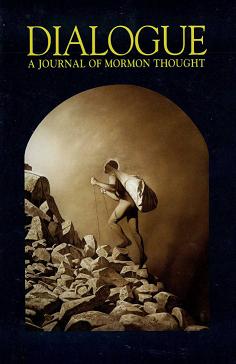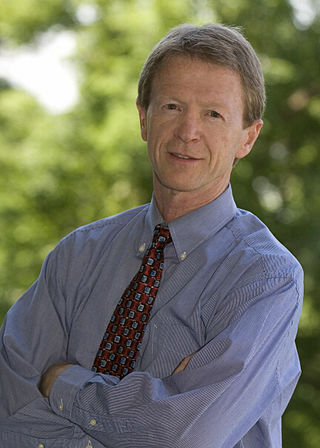The status of women in Mormonism has been a source of public debate since before the death of Joseph Smith in 1844. Various denominations within the Latter Day Saint movement have taken different paths on the subject of women and their role in the church and in society. Views range from the full equal status and ordination of women to the priesthood, as practiced by the Community of Christ, to a patriarchal system practiced by the Church of Jesus Christ of Latter-day Saints, to the ultra-patriarchal plural marriage system practiced by the Fundamentalist Church of Jesus Christ of Latter-Day Saints and other Mormon fundamentalist groups.

The Woman's Exponent was a semi-official publication of the Church of Jesus Christ of Latter-day Saints that began in 1872. It published articles advocating for women's suffrage and plural marriage, in addition to poetry and other writings. Lula Greene Richards and Emmeline B. Wells were its editors until 1914, when the Exponent was dissolved. It was "the first long-lived feminist periodical in the western United States." While it had no direct successor, the Relief Society did launch its own magazine, the Relief Society Magazine, in 1915.

Leonard James Arrington was an American author, academic and the founder of the Mormon History Association. He is known as the "Dean of Mormon History" and "the Father of Mormon History" because of his many influential contributions to the field. Since 1842, he was the first non-general authority Church Historian for the Church of Jesus Christ of Latter-day Saints, from 1972 to 1982, and was director of the Joseph Fielding Smith Institute for Church History from 1982 until 1986.

Laurel Thatcher Ulrich is a Pulitzer Prize-winning American historian specializing in early America and the history of women, and a professor at Harvard University. Her approach to history has been described as a tribute to "the silent work of ordinary people". Ulrich has also been a MacArthur Genius Grant recipient. Her most famous book, A Midwife’s Tale, was later the basis for a PBS documentary film.
Historians of the Latter Day Saint movement are a diverse group of historians writing about Mormonism. Historians devoted to the history of the Latter Day Saint movement may be members of a Latter Day Saint faith or non-members with an academic interest. They range from faith-promoting historians to anti-Mormon historians, but also include scholars who make an honest effort at objectivity.

Emmeline Blanche Woodward Harris Whitney Wells was an American journalist, editor, poet, women's rights advocate, and diarist. She served as the fifth Relief Society General President of the Church of Jesus Christ of Latter-day Saints from 1910 until her death. She represented the state of Utah at both the National and American Women's Suffrage conventions and was president of the Utah Woman's Suffrage Association. She was the editor of the Woman's Exponent for 37 years. She was a plural wife to Newel K. Whitney, then Daniel H. Wells.

Dialogue: A Journal of Mormon Thought is an independent quarterly journal that addresses a wide range of issues on Mormonism and the Latter Day Saint Movement.

Philip Layton Barlow is a Harvard-trained scholar who specializes in American religious history, religious geography, and Mormonism. In 2019, Barlow was appointed associate director of the Neal A. Maxwell Institute for Religious Scholarship. Barlow was the first full-time professor of Mormon studies at a secular university as the inaugural Leonard J. Arrington Chair of Mormon History and Culture at Utah State University (USU), from 2007 to 2018.
New Mormon history refers to a style of reporting the history of Mormonism by both Mormon and non-Mormon scholars which departs from earlier more polemical or faith-based styles of history. Rather than presenting material selectively to either prove or disprove Mormonism, the focus of new Mormon history is to present history in a more humanistic and dispassionate way, and to situate Mormon history in a fuller historical context. Because it is a break from past historical narratives, new Mormon history tends to be revisionist. In many cases, the new Mormon history follows the perspectives and techniques of new history, including cultural history. The Mormon historian Richard Bushman described it as "a quest for identity rather than a quest for authority." New Mormon historians include a wide range of both Mormon and non-Mormon scholars, the most prominent of which include Bushman, Jan Shipps, D. Michael Quinn, Terryl Givens, Leonard J. Arrington, Richard P. Howard, Fawn Brodie, and Juanita Brooks.

Louisa Lula Greene Richards was a poet and was the first female periodical editor in Utah Territory. Richards's work was published under a variety of names, including Louisa L. Greene, Louise L. Green, Lula Green, and Lula G. Richards. She was a member of the Church of Jesus Christ of Latter-day Saints.
Claudia Marian Lauper Bushman is an American historian specializing in domestic women's history, especially as it relates to the history of the Church of Jesus Christ of Latter-day Saints. She helped found, and was the first editor of, the progressive LDS magazine Exponent II, has written American and LDS history books, and established a Mormon women oral history project at Claremont Graduate University.
Feminist Mormon Housewives (fMh) is a group blog, podcast, and Facebook group featuring commentary and discussion on contemporary Mormon culture and women's issues. According to The New York Times, "Unlike the more mainstream Mormon blogs – known collectively as the Bloggernacle – that by and large promote the faith, this online diary focuses on the universal challenges of mothering young children and on frustration with the limited roles women have in the Church of Jesus Christ of Latter-day Saints."
Mormon studies is the interdisciplinary academic study of the beliefs, practices, history and culture of individuals and denominations belonging to the Latter Day Saint movement, a religious movement associated with the Book of Mormon, though not all churches and members of the Latter Day Saint movement identify with the terms Mormon or Mormonism. Denominations of the Latter Day Saint movement include the Church of Jesus Christ of Latter-day Saints, by far the largest, as well as the Community of Christ (CoC) and other smaller groups, include some categorized under the umbrella term Mormon fundamentalism.
Mormon feminism is a feminist religious social movement concerned with the role of women within Mormonism. Mormon feminists commonly advocate for a more significant recognition of Heavenly Mother, the ordination of women, gender equality, and social justice grounded in Mormon theology and history. Mormon feminism advocates for more representation and presence of women as well as more leadership roles for women within the hierarchical structure of the church. It also promotes fostering healthy cultural attitudes concerning women and girls.
Susan Booth-Forbes, is an American-Irish teacher, writer and literary editor. She was a co-founder of the progressive Mormon women's journal Exponent II, from 1974, and its longest-serving editor, from 1984 to 1997, and involved in its long-running program of retreats. She has operated the Anam Cara Writer's and Artist's Retreat in West Cork, Ireland, for over twenty years, hosting and supporting more than 1,000 writers and other creative artists. Before her editorial career, while a high school English teacher, she was one of two plaintiffs in a successful legal action over discrimination against female staff by her employer when she was pregnant in 1971, winning a declaration of unconstitutionality in US Federal court.
This is a bibliography of works on the Latter Day Saint movement.

Charlotte Ives Cobb Kirby was an influential and radical women's rights activist and temperance advocate in the state of Utah as well as a well-known national figure. Charlotte was born in Massachusetts and at seven years of age moved to Nauvoo, Illinois with her mother, an early member of the Church of Jesus Christ of Latter-day Saints. There, without divorcing father Henry Cobb, her mother became Brigham Young's second plural wife. They then moved to Utah in 1848. Charlotte, previously a plural wife herself, spoke out against polygamy and gained much opposition from polygamous women suffragists because of it. Her first marriage was to William S. Godbe, the leader of the Godbeite offshoot from the LDS Church. After divorcing Godbe, Kirby married John Kirby, a non-LDS man, and they were together until Charlotte's death in 1908. Charlotte was a leading figure of the Utah Territory Woman Suffrage Association, and served as a correspondent to the government and other suffragist organizations, including the National Women's Suffrage Association. Charlotte often traveled to the East Coast to deliver lectures regarding women's rights and temperance, the first Utah woman and the first woman with voting rights to speak to national suffragist audiences. Charlotte Ives Cobb Kirby died on January 24, 1908, at age 71 in Salt Lake City, Utah.
Judith Ann Rasmussen Dushku is an American academic political scientist, journalist, writer, and humanitarian. An active member of the Church of Jesus Christ of Latter-day Saints, and well known as a Mormon feminist, Dushku cofounded the Mormon women's journal Exponent II, was the Relief Society president for the Boston stake of the LDS Church, became lead founder of a humanitarian agency in Uganda, and is a professor of government at Suffolk University, specializing in comparative politics and the interaction of policy and gender since the 1970s. Dushku has been dean of a satellite campus, has won two major awards at Suffolk, and has been a Fulbright Senior Specialist. Dushku was extensively quoted by Mitt Romney when he was running for a US presidential candidacy. Her daughter, Eliza Dushku, is a successful television and film actress.
A House Full of Females: Plural Marriage and Women's Rights in Early Mormonism, 1835–1870 is a non-fiction book written by American historian Laurel Thatcher Ulrich. The book was published on January 10, 2017, by Knopf.








